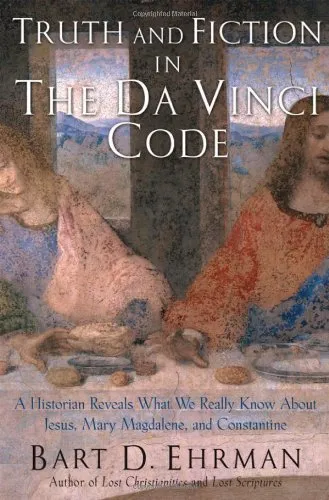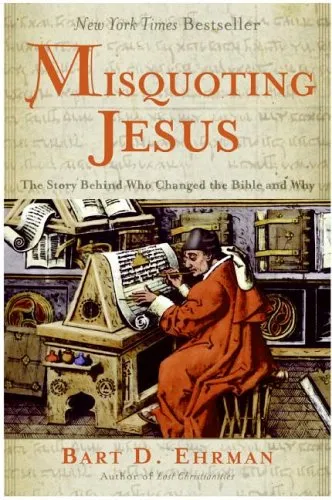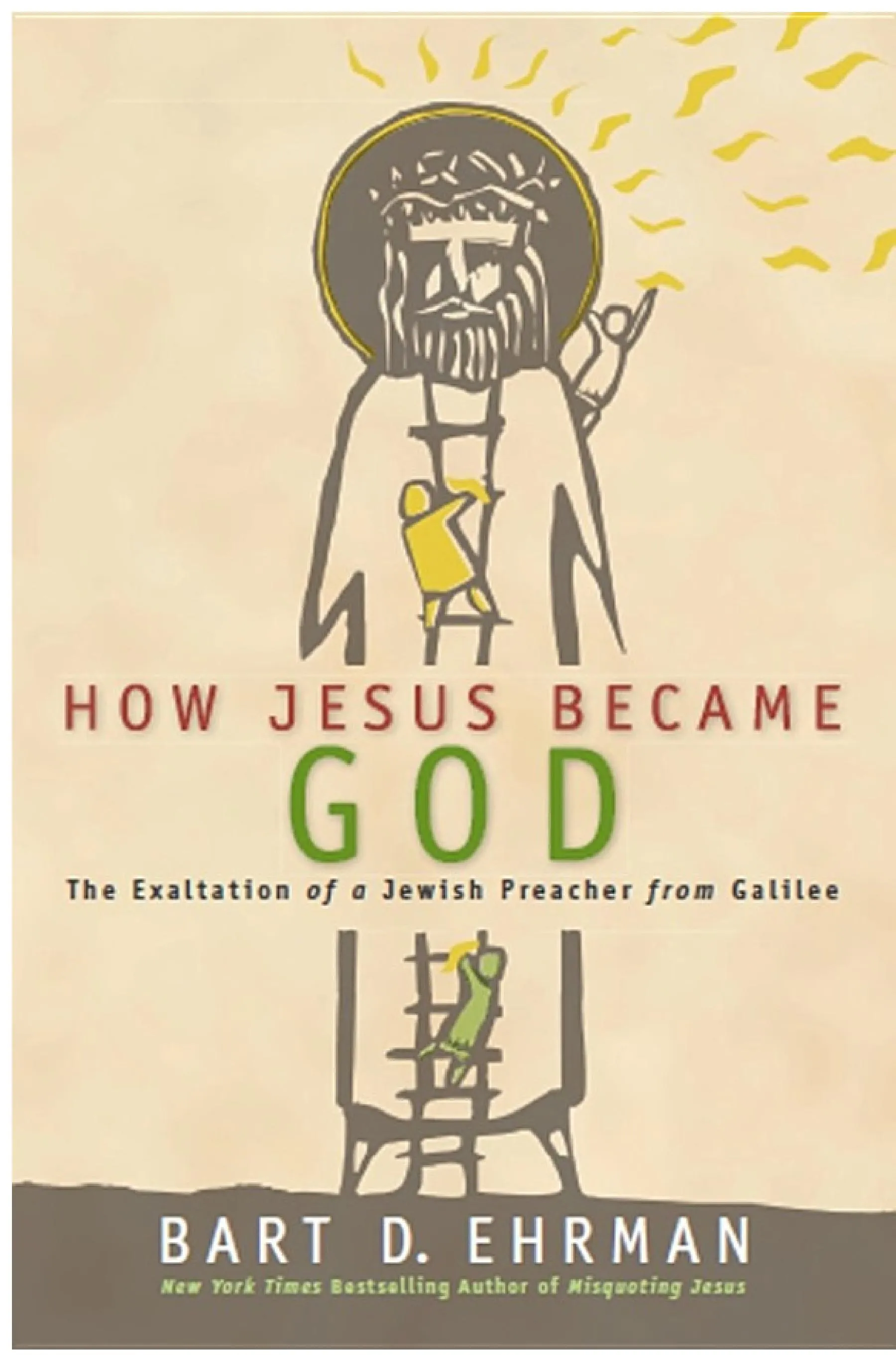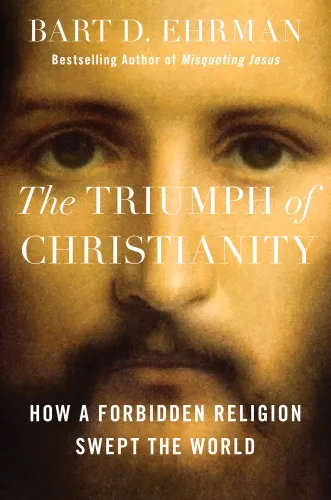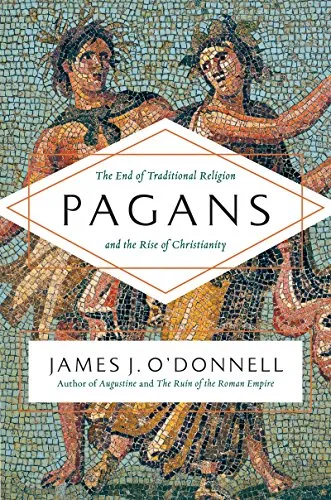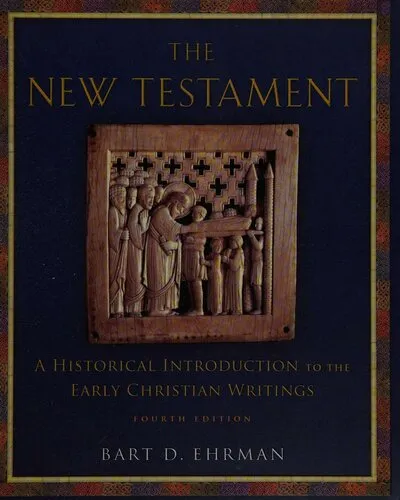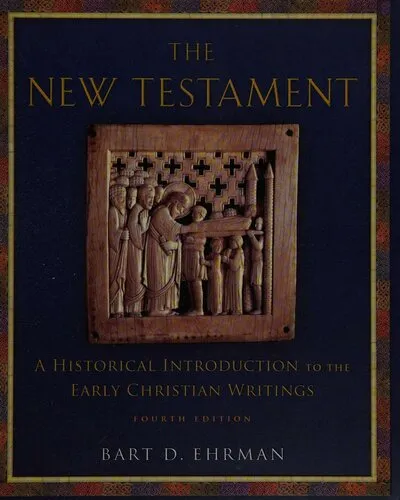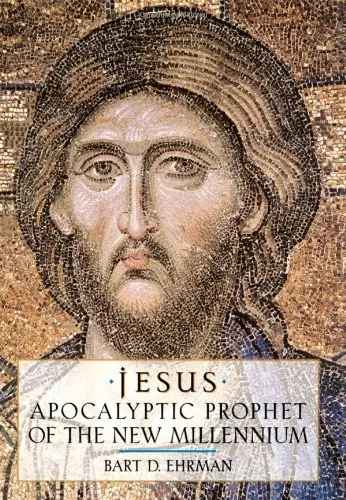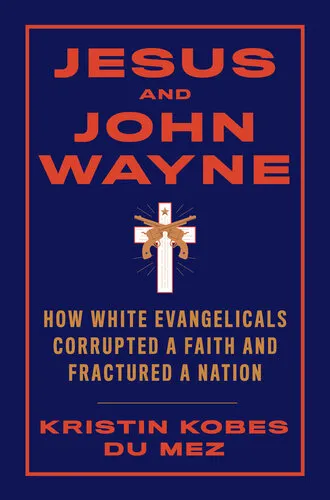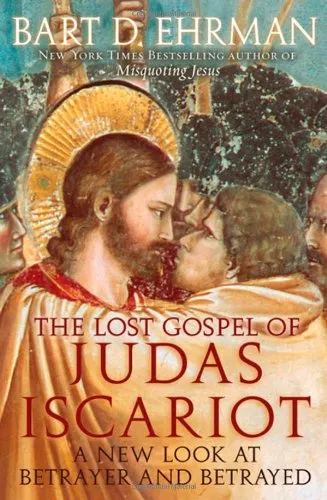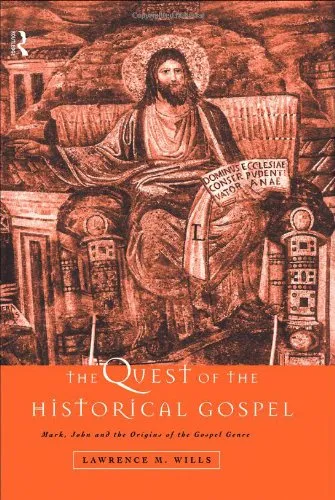Truth and Fiction in The Da Vinci Code: A Historian Reveals What We Really Know about Jesus, Mary Magdalene, and Constantine
3.7
بر اساس نظر کاربران

شما میتونید سوالاتتون در باره کتاب رو از هوش مصنوعیش بعد از ورود بپرسید
هر دانلود یا پرسش از هوش مصنوعی 2 امتیاز لازم دارد، برای بدست آوردن امتیاز رایگان، به صفحه ی راهنمای امتیازات سر بزنید و یک سری کار ارزشمند انجام بدینکتاب های مرتبط:
Persian Summary
معرفی اجمالی کتاب
کتاب «Truth and Fiction in The Da Vinci Code: A Historian Reveals What We Really Know about Jesus, Mary Magdalene, and Constantine» نوشتهی Bart D. Ehrman به بررسی مقایسهای میان حقایق مستند تاریخی و مفاهیم تخیلی موجود در کتاب «The Da Vinci Code» اثر Dan Brown میپردازد. این اثر نه تنها به خوانندگان امکان میدهد تا به دقت بیشتری به مفاهیم تاریخی نگریسته و آنها را تحلیل کنند، بلکه به پاسخگویی به سوالات مهمی در مورد شخصیتهای تاریخی مانند عیسی مسیح، مریم مجدلیه و کنستانتین بزرگ میپردازد.
خلاصه تفصیلی کتاب
Bart D. Ehrman به عنوان یک تاریخدان برجسته، در این کتاب به تمام جزئیاتی که در «The Da Vinci Code» آمده است، نظر میاندازد و تلاش میکند تا میان داستانهای جذاب و واقعیات تاریخی تمایز قائل شود. او به بررسی اینکه آیا مریم مجدلیه و عیسی مسیح ازدواج کردهاند، میپردازد و صحت این ادعا را بر اساس شواهد تاریخی موجود تحلیل میکند. Ehrman همچنین به نقش کنستانتین در ایجاد و تثبیت کلیسای مسیحی میپردازد و اینکه تا چه حد این نقش تاریخی در رمان Brown به صورت افسانه درآمده است.
نکات کلیدی کتاب
- تمایز میان واقعیت و افسانه در داستانهای معاصر مربوط به تاریخ مسیحیت
- تحلیل نقادانه منابع تاریخی و نقش آنها در فهم بهتر تاریخ دینی
- افزایش آگاهی خواننده درباره چگونگی تحریف وقایع تاریخی در فرهنگ عامه
- روشهای تحلیل متون تاریخی برای درک بهتر نظریات دینی
نقلقولهای مشهور از کتاب
«اینکه چگونه یک داستان جذاب میتواند تصورات عمومی را از تاریخ تغییر دهد، مسئلهای است که باید با دقت به آن پرداخت.»
«تاریخ همواره تلفیقی از واقعیت و روایت است؛ روایتهایی که باید پیوسته به چالش کشیده شوند تا به حقیقت نزدیکتر شوند.»
دلایل اهمیت کتاب
کتاب «Truth and Fiction in The Da Vinci Code» اهمیت ویژهای برای علاقهمندان به تاریخ و دینشناسی دارد، زیرا به مخاطبان کمک میکند تا فراتر از داستانهای تخیلی بازار کتاب به بررسی و تحلیل تاریخ حقیقی بپردازند. این کتاب با ارائه رویکردی علمی و محققانه به تاریخ، چالشهای جدیای برای کنکاش در روایتهای جعلی که میتوانند باورهای عامه را تحت تاثیر قرار دهند، مطرح میکند. علاوه بر این، کتاب به مفسران و دانشجویان تاریخ نگاهی جدید به روشهای تحقیق دقیق در متون دینی و تاریخی میدهد.
Introduction
In the realm of modern popular literature, few books have sparked as much intrigue and debate as Dan Brown's "The Da Vinci Code." Its thrilling narrative and provocative assertions have captivated millions worldwide, leaving both casual readers and scholars pondering the boundaries between historical fact and speculative fiction. Enter "Truth and Fiction in The Da Vinci Code: A Historian Reveals What We Really Know about Jesus, Mary Magdalene, and Constantine" by Bart D. Ehrman, a book that seeks to unravel the tapestry woven by Brown and illuminate the truth beneath the sensationalism.
As an esteemed historian, Ehrman delves into the controversies and questions raised by Brown’s bestseller, providing readers with a scholarly assessment grounded in historical evidence. This book is an essential companion for anyone captivated by The Da Vinci Code's mystery, offering clarity and factual insight into figures and events intricately portrayed in Brown’s narrative. Whether you are a skeptical reader or a devoted fan, Ehrman's exposition allows you to appreciate the ingenuity of Brown's work while discerning the actual historical truths interwoven within.
Detailed Summary of the Book
"Truth and Fiction in The Da Vinci Code" meticulously separates the historical evidence from the fictional elements popularized by Dan Brown. Starting with Jesus and Mary Magdalene, Ehrman examines the claim that Jesus was married to Mary Magdalene and had descendants, a central theme in Brown’s novel. He navigates through ancient texts, shedding light on Mary Magdalene's role within early Christianity.
Proceeding to the era of Constantine, Ehrman dissects the portrayal of the Roman Emperor's influence on early Christianity. The book scrutinizes the assertion that Constantine radically altered Christianity during the Council of Nicaea, particularly addressing allegations concerning the formation of the biblical canon and the divinity of Jesus.
Ehrman further explores the Gnostic Gospels, deciphering their content and contextual significance, contrasting them with Brown's interpretation. Through painstaking research, Ehrman provides readers with an authoritative perspective on these controversial topics, balancing accessibility with academic rigor.
Key Takeaways
- The evidence regarding Mary Magdalene's purported marriage to Jesus is largely speculative and unsupported by historical texts.
- There is no credible historical evidence that Constantine manipulated the basic tenets of Christianity at the Council of Nicaea.
- The Gnostic Gospels provide alternative perspectives on early Christianity, but do not support the claims made in The Da Vinci Code.
- Ehrman emphasizes the importance of separating historical facts from literary fiction for a fuller understanding of Christian history.
Famous Quotes from the Book
"The Da Vinci Code throws a flood of misinformation at the reader, assuming that most people won’t know what to believe or what to make of it all."
"History is far more interesting than anything the modern imagination can concoct."
Why This Book Matters
"Truth and Fiction in The Da Vinci Code" is not just a rebuttal to a popular fiction novel; it is a thoughtful exploration of where historical reality meets creative narrative. In presenting well-researched evidence and scholarly critique, Bart D. Ehrman empowers readers to distinguish fact from fiction. This book is crucial for those interested in understanding the historical underpinnings of Christianity, as well as the cultural and literary implications of its modern representations.
By providing an accurate portrayal of figures like Jesus, Mary Magdalene, and Constantine, Ehrman contributes to a more informed public discussion about religious history and its modern-day implications. His work offers a lens through which readers can discern the truth, appreciate the intrigue of fiction, and understand the nuanced challenges of historical representation.
دانلود رایگان مستقیم
شما میتونید سوالاتتون در باره کتاب رو از هوش مصنوعیش بعد از ورود بپرسید
دسترسی به کتابها از طریق پلتفرمهای قانونی و کتابخانههای عمومی نه تنها از حقوق نویسندگان و ناشران حمایت میکند، بلکه به پایداری فرهنگ کتابخوانی نیز کمک میرساند. پیش از دانلود، لحظهای به بررسی این گزینهها فکر کنید.
این کتاب رو در پلتفرم های دیگه ببینید
WorldCat به شما کمک میکنه تا کتاب ها رو در کتابخانه های سراسر دنیا پیدا کنید
امتیازها، نظرات تخصصی و صحبت ها درباره کتاب را در Goodreads ببینید
کتابهای کمیاب یا دست دوم را در AbeBooks پیدا کنید و بخرید
1558
بازدید3.7
امتیاز0
نظر98%
رضایتنظرات:
3.7
بر اساس 0 نظر کاربران
Questions & Answers
Ask questions about this book or help others by answering
No questions yet. Be the first to ask!
